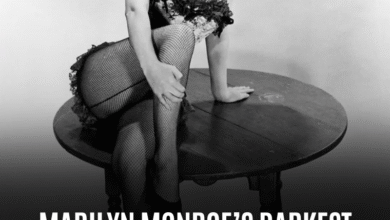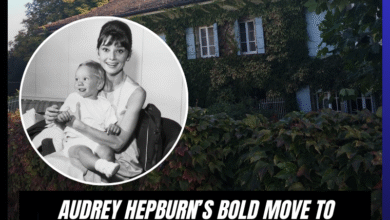Scarlett Johansson Almost Quit Hollywood: The Rejections That Shaped Her Career
OPINION: This article may contain commentary which reflects the author's opinion.
Scarlett Johansson’s name is synonymous with Hollywood success. Whether playing Black Widow in the Marvel Cinematic Universe or delivering unforgettable performances in indie hits like Lost in Translation, Johansson has become one of the most versatile and bankable actresses of her generation. However, despite her extensive range and undeniable talent, Johansson’s journey to superstardom wasn’t always smooth sailing. In fact, at various points in her career, she found herself at a crossroads, facing rejection and feeling trapped by typecasting.
Typecasting and the Struggle for Artistic Freedom
After Lost in Translation (2003), Johansson quickly became a rising star. Her portrayal of Charlotte, a young woman navigating the complexities of life and loneliness in Tokyo, earned her widespread critical acclaim and a BAFTA Award. Alongside The Girl With the Pearl Earring (2003), her career was poised for greatness. But while these films pushed her forward, they also began to pigeonhole Johansson into a specific type of role: the object of desire or the introspective, sensitive woman.
Johansson herself has openly discussed the frustration of being typecast. “It was hard to get out of that pigeonhole,” she said in an interview with Variety. This typecasting problem was further compounded by her roles in Scoop (2006) and Vicky Cristina Barcelona (2008), which continued to cast her as the object of male affection—characters often involved in love triangles or affairs.
By 2009, Johansson found herself stuck in a frustrating pattern, taking roles that only seemed to reinforce the “narrative” of her being the quintessential romantic lead. He’s Just Not That Into You was yet another example of this, and Johansson herself noted that the character she played in that film continued the same trend of sentimental, somewhat superficial roles.
Rejection and Career Doubts
As the years went on, Johansson’s frustration with the lack of exciting roles grew. She felt trapped in a Hollywood mold that saw her as nothing more than a beautiful face, one frequently offered “every Marilyn Monroe script ever,” but none that allowed her to explore her full artistic range. This dissatisfaction reached a breaking point when Johansson was rejected for roles in two major films: Iron Man 2 and Gravity. Both of these rejections marked a low point in Johansson’s career, a moment she describes as “the straw that broke the camel’s back.”
At this crossroads, Johansson seriously questioned whether her career was coming to an end from a creative perspective. She wondered if she had exhausted her potential, and whether her future in Hollywood would be confined to roles that left her unfulfilled. It was a devastating moment for any actress, particularly one who had already proven her versatility and skill.
A Creative Rebirth
Fortunately for Johansson, a new opportunity soon arose. In 2010, Emily Blunt’s scheduling conflict opened the door for Johansson to join the cast of Iron Man 2, where she was cast as the iconic Natasha Romanoff, aka Black Widow. This role, while monumental for Johansson’s career, was just the beginning of a creative resurgence. Alongside her superhero fame, Johansson also decided to return to the stage, taking on a challenging role in the revival of Arthur Miller’s A View from the Bridge.
The move to theatre turned out to be a turning point for Johansson, who describes the experience as a “growth spurt, both creatively and artistically.” The stage provided her with a fresh challenge, allowing her to step away from the comfortable but restrictive roles she had been offered in film. It was here, in a deeply different medium, that Johansson began to rediscover her love for acting and further develop her craft.
Breaking Out of the Box
With her return to stage acting and the success of Iron Man 2, Johansson began to prove that she was more than just a romantic lead. Her role in Her (2013), where she voiced the artificial intelligence operating system Samantha, marked a significant departure from her previous work. Opposite Joaquin Phoenix, Johansson’s voice performance was both haunting and emotionally rich, showcasing her incredible range in a role that few would have expected from her.
But perhaps her most transformative role came in Marriage Story (2019), where Johansson portrayed Nicole Barber, a woman going through a painful divorce. The role was a true test of her acting ability, and Johansson’s raw, unflinching performance earned her an Academy Award nomination for Best Actress. This marked a full-circle moment for Johansson, whose journey from typecasting and rejection to critical acclaim demonstrated her resilience and determination to break free from the mold Hollywood had cast her in.
A Career Reinvented
Today, Scarlett Johansson stands as one of the most respected and versatile actresses in Hollywood. Her ability to overcome rejection and break free from the constraints of typecasting is a testament to her talent, drive, and willingness to take creative risks. From the depths of career doubt to starring in Black Widow and Marriage Story, Johansson has proven that reinvention is possible, even in an industry that often seeks to box in its stars.
Her story is not just about overcoming rejection; it’s about taking control of her own narrative, embracing challenges, and continuing to push the boundaries of her craft. Scarlett Johansson’s journey is a powerful reminder that even the most successful actors face obstacles—and that sometimes, the road to greatness requires embracing rejection and reinventing oneself along the way.



